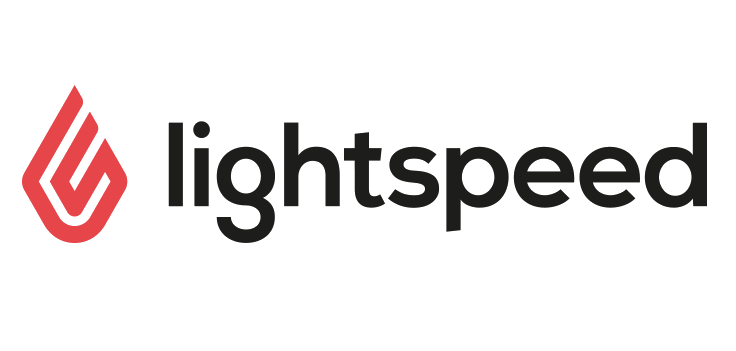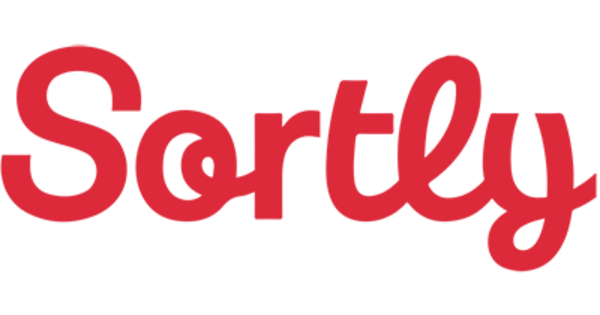Best Inventory Management Software of 2025
Many, or all, of the products featured on this page are from our advertising partners who compensate us when you take certain actions on our website or click to take an action on their website. However, this does not influence our evaluations. Our opinions are our own. Here is a list of our partners and here's how we make money.
The best inventory management software supports all of your business’s sales channels, streamlines order management and generates detailed reports. The basic inventory tools that come with small-business accounting software and point-of-sale systems can be sufficient in some cases, but more complex operations may require stand-alone software with extra capabilities.
Our top inventory management picks include:
Best free option: Zoho Inventory.
Best for retail shops: Square.
Best for bars and restaurants: Backbar.
Best for manufacturing companies: Katana.
Below is NerdWallet's complete list of the best inventory management software picks and what makes them stand out from the competition.
Why trust NerdWallet
Our top 10 inventory management software picks
| Product | Starting at | Promotion | Learn more |
|---|---|---|---|
 Zoho Inventory Learn more on Zoho Inventory's website | $0 Additional pricing tiers (per month): $39, $99, $159, $299. | 14-day free trial | Learn more on Zoho Inventory's website |
 Square Inventory Learn more on Square's website | $0 Additional pricing tiers (per month): $89 per location, custom. | 30-day free trial | Learn more on Square's website |
 Lightspeed Inventory Learn more on Lightspeed's website | $109/month Additional pricing tiers (per month): $179, $339. | 14-day free trial | Learn more on Lightspeed's website |
 Sortly | $0 Additional pricing tiers (per month): $49, $149, $299, custom. | 14-day free trial | |
 SalesBinder | $0 Additional pricing tiers (per month): $9, $19, $49, $99, $199, $299. | 30-day free trial | |
 Cin7 Core | $349/month Additional pricing tiers (per month): $599, $999. | 14-day free trial | |
 Backbar | $0 Additional pricing tiers per location (per month): $99, $149. | One-month free trial of the Essential or Professional plan. | |
 Katana | $199/month Additional pricing tiers (per month): $399; $899; $1,999. | 14-day free trial | |
 Brightpearl | N/A Quote-based pricing. | N/A | |
 Finale Inventory | $99/month Additional pricing tiers (per month): $240, $420, $649, $949. | 14-day free trial |
A detailed look at the best inventory management software
Zoho Inventory

Zoho Inventory
$0
Additional pricing tiers (per month): $39, $99, $159, $299.
on Zoho Inventory's website
Our editorial take: Unlike many of its competitors, Zoho Inventory offers a free plan that includes a decent handful of inventory management features: You can process 50 sales orders per month, track items from one warehouse, integrate with one Shopify store and run inventory reports. All plans come with e-commerce, payment gateway and accounting integration options, too. Zoho Inventory’s plans scale up according to the number of users, warehouses, orders, bills and shipping labels, and the software is especially ideal for entrepreneurs who subscribe to other products in the Zoho suite, like Zoho CRM or Zoho Books.
Sync inventory across multiple online sales channels. Other integrations include Zoho Books and QuickBooks Online for accounting.
Free plan includes invoice customization, shipping labels, backorders and item bundling.
Free barcode, purchase order and shipping label generators.
Mobile app available for iOS and Android.
Free plan caps users at one, purchase orders at 20 and sales orders at 50.
Square
Our editorial take: Square is a top-rated POS system and its retail-specific platform, Square for Retail, offers inventory management features that can be sufficient for many small retail businesses. Business owners can sync inventory across multiple channels, both in store and online. All plans come with a free online store and let you offer in-store pickup and delivery options, send invoices, set up low stock alerts and add product details (like size or color) to each item. For more time-saving capabilities, like purchase order management and barcode label printing, you can upgrade to the paid Plus plan.
Built-in POS system and payment processing; in-house POS hardware available.
Unlimited items in all plans.
Barcode printing, mobile inventory counting tool, COGS tracking, stock forecasts and reorder recommendations in paid plans.
Easy to navigate.
Coupons and sale prices don’t sync between Square Online and Square POS.
Fewer inventory reports than some competitors.
Lightspeed
Our editorial take: Lightspeed Retail is a POS system with strong, built-in inventory management features. In addition to keeping track of stock, you can fill out purchase orders from within the software, bundle multiple items and make bulk price changes across sales channels. The system lets you set up reorder points and low-stock alerts, choose from a wide variety of product variations and generate an unlimited number of barcodes, which is important for businesses that sell a high volume of items. Report customization options allow you to filter by date, outlet, supplier and brand, as well as available or low inventory. To sync your sales and inventory data with accounting software, like QuickBooks or Xero, you’ll have to opt for the more expensive Core plan.
Built-in POS system and payment processing; in-house POS hardware available.
Generate unlimited barcode labels.
Create purchase orders from within the software.
24/7 chat support in all plans.
Must subscribe to Plus plan for 24/7 phone support.
Contract required for discounted pricing.
Sortly

Sortly
$0
Additional pricing tiers (per month): $49, $149, $299, custom.
Our editorial take: Sortly isn’t the only inventory management software with a mobile app, but its app is one of the simplest. You can use it to scan QR codes and barcodes with your smartphone, upload photos of items and scroll through your inventory lists. Just know that you’ll need to subscribe to the Ultra plan or higher to generate your own barcodes. User licenses and item entry allowances also increase as you scale up. All plans, however, include offline mobile access, which lets you modify inventory counts when the internet is down. Overall, Sortly is a straightforward solution for small-business owners who want to access their inventory counts on the go.
Free plan includes an in-app barcode scanner for checking items in and out.
Mobile app organizes inventory counts by item photo to make them easier to read.
Available for iOS and Android.
Free plan doesn’t include low-stock alerts and caps item types at 100.
Must subscribe to Premium plan to integrate with QuickBooks.
No built-in e-commerce integrations.
Salesbinder

SalesBinder
$0
Additional pricing tiers (per month): $9, $19, $49, $99, $199, $299.
Our editorial take: Unlike some of its competitors, Salesbinder supports an unlimited number of locations, even in its free plan. This is a plus for businesses that store their inventory in multiple locations and have to frequently transfer items from one place to another. You can also add kitting and bundling capabilities to any paid plan for an extra $9 per month. This is an important feature for businesses that sell products, like furniture, that involve multiple parts and need to be assembled upon delivery. In terms of free features, all plans include customer relationship management (CRM) tools, packing lists, shipment tracking, reporting and stock transfers.
All plans support unlimited locations.
Free plan includes invoicing, purchase orders, barcoding, shipment tracking and CRM features.
Kitting and bundling add-on available.
You’ll need to select the Bronze plan ($19 monthly) or up to integrate with QuickBooks Online, Xero, WooCommerce and Zapier.
Mobile app for iOS only.
Cin7

Cin7 Core
$349
Additional pricing tiers (per month): $599, $999.
Our editorial take: Whereas some inventory management software only accommodates businesses in a particular industry, Cin7 Core can be a good fit for a variety of businesses, thanks to its robust set of features. Each of its three plans support multiple users and include accounting integrations, multi-channel order management and reporting. An optional POS add-on, along with a built-in accounting module and B2B portal, help make Cin7 Core an all-in-one solution for growing businesses. If you’re not sure which plan is right for you, start with identifying the type of business you own. There are separate plans for retailers and for manufacturers.
Can accommodate businesses in multiple industries, including retail and manufacturing.
All plans include two e-commerce integrations, plus an accounting integration.
Track components and finished goods.
More than 100 reports available.
Plans can be expensive.
Limited number of users in all plans.
Backbar

Backbar
$0
Additional pricing tiers per location (per month): $99, $149.
Our editorial take: Backbar helps bars and restaurants prevent perishable inventory waste with tools like excess inventory reporting and recipe and drink costing. While you have to subscribe to a paid plan to get the most out of Backbar’s reporting and recipe costing features, its free plan still lets you set up order reminders, integrate with POS systems, add an unlimited number of users and upload invoices.
Unlimited number of users, even with the free plan.
POS integrations and one-click purchase orders available in all plans.
Ability to calculate pour costs, drink profits and recipe costs.
Access to detailed reports on product trends, menu prices, profit and excess inventory.
Limited to a single restaurant or bar location and only six months of reporting history for the free plan.
Custom report tagging and QR code menu links only available in highest-tier plan.
Katana

Katana
$199
Additional pricing tiers (per month): $399; $899; $1,999.
Our editorial take: Created specifically for manufacturing companies, Katana’s inventory software lets you track both raw materials and finished products, set reorder points and see which items have the best profit margins. Its “insights” dashboards are easy to read and while plans can be expensive, they aren’t as costly as some competitors. When you create a purchase order with Katana, the software will take stock of your inventory from that particular vendor and let you know if you’re missing anything. Plus, the system integrates with a range of products, including QuickBooks Online, Xero, WooCommerce and Shopify.
Access to accounting and e-commerce integrations in all plans.
Introductory plan lets you track inventory in up to three warehouses.
Use Katana Shop Floor app to track time spent on particular tasks, scan barcodes and assign jobs to employees.
Create purchase orders from within the software.
Higher-tier plans require costly implementation package.
Brightpearl

Brightpearl
$0
Quote-based pricing.
Our editorial take: Brightpearl's inventory management capabilities go beyond the basics, making it a good fit for quickly growing retail businesses. You can create order processing workflows, manage separate shipping carriers for each sales channel, set up dropshipping rules and receive buying recommendations. Additionally, Brightpearl offers an integrated CRM solution and POS system so omnichannel businesses can sync offline and online sales. When it comes to accounting, you can either use Brightpearl’s own module or integrate with third-party products like QuickBooks and Xero.
Sync inventory across multiple channels online and in-store.
Create automation rules for tasks like order processing and invoicing.
Forecasting tools predict demand and make inventory recommendations.
Also offers its own POS system, accounting and invoicing capabilities, CRM system and warehouse management software.
Quote-based pricing makes it difficult to compare costs.
Excessive for small businesses that don’t plan to grow.
Finale Inventory

Finale Inventory
$99
Additional pricing tiers (per month): $240, $420, $649, $949.
Our editorial take: All Finale Inventory plans include kitting and bundling, invoicing and serial number tracking. Each plan increases the number of users, monthly purchase and sales orders and integrations. The Silver plan comes with additional capabilities like report customization, but you’ll need to subscribe to a higher-tier plan if you want access to the Android app for barcode scanning. A unique feature of this inventory management software is that it allows you to bundle QuickBooks Online Advanced, the most expensive QuickBooks Online accounting plan, with Finale Inventory’s Silver plan or higher, so you can save some money overall.
Finale Inventory and QuickBooks Online Advanced subscriptions can be bundled.
Offers a variety of POS and e-commerce integrations including Lightspeed, Shopify, Square, Amazon and Etsy.
All plans include at least one virtual training session.
Can create purchase orders from within the software.
Must subscribe to the Silver plan or higher to integrate with QuickBooks Online.
What is inventory management software?
Inventory management software is a program that tracks how much inventory you have in stock, how much you’ve sold and where each item is located. After signing up for an account online, you’ll add all of your inventory items to the system or import a list. From there, you may fill out purchase orders and track sales from within the software.
More sophisticated inventory management software will forecast stock levels based on previous sales and tell you how much inventory you should order and when. That way, you’ll have your most in-demand products in stock when you need them while also preventing an overstock of items, especially those that are less in demand.
Your inventory management software should integrate with all of your sales channels — meaning your e-commerce platforms and point-of-sale (POS) system. On top of that, make sure it integrates with your accounting software. Inventory is considered a current asset account and appears on your balance sheet.
💬 From our Nerds: Tips for setting up your inventory system
“Every business has to create categories for their inventory. Software can make doing so pretty simple — sometimes, too simple. I think things can quickly become overly complicated based on how you choose to segment products.
“My best advice? Start small. Begin by categorizing according to location, department or item type. Don’t worry about unique entries for different sizes and colors. You can usually add those options as “variants” or “variations” of existing items to simplify tracking.”

— Hillary Crawford, lead writer covering small business
Inventory management software features
Real-time inventory tracking. Track inventory items as they move through the supply chain and order fulfillment process. Software with this feature will immediately update when returns and sales are made, too.
Multi-channel inventory management. Businesses that sell products in multiple places will need to centralize their sales and inventory data in one place.
Low-stock alerts and reorder points. You can set custom reorder points so that you’re notified when it’s time to order more inventory. Some software will even suggest or calculate these for you.
Purchase order management. Creating and sending purchase orders from within your inventory management software allows you to streamline the process. This can be especially helpful for businesses that use the just-in-time inventory strategy.
Digital labeling and barcode scanning. Counting inventory by hand takes time and is prone to human error. Scanning items’ SKU or UPC labels as they're delivered or packed for shipment is much more efficient. Some software lets you use a mobile device as a scanner.
Kitting and/or parts and assembly tracking. Track products with multiple parts both individually and as a whole.
Reporting. Look for reports on inventory forecasts, cost of goods sold, inventory profitability and sales by item or product.
Integrations. Inventory software should integrate with your accounting software, e-commerce platform and POS system.
Industry specifics. Restaurants have different inventory needs than retailers, for example. Finding software that caters to your unique business can help maximize profit.
Item variants and units of measure flexibility. Businesses that sell the same shirt in multiple sizes and colors, for example, will need inventory management software that lets you record variants (like color and size), as well as descriptions.
Order fulfillment options. Inventory management software with shipping add-ons or features helps you manage the fulfillment process end-to-end.
How much does inventory management software cost?
Unless you choose a free inventory management software option, subscriptions can be expensive — upward of $300 per month in some cases. Less-expensive inventory management software costs between $50 and $100 per month, and most platforms offer a range of plans and prices. The more complex your business’s inventory needs, the more you should expect to pay.
The following factors may impact your monthly inventory management software costs:
How many inventory locations or warehouses your business has.
How many items you need to track.
The number of sales channels you need to integrate.
How many users need to access the inventory management software.
The number of sales orders you create per month.
The complexity of your production process. For example, it may cost more to track both parts and finished products.
Whether you need add-ons for shipping. Small businesses that ship orders may need a more sophisticated product that includes end-to-end order fulfillment options.
Your payment schedule. Opting to pay annually, as opposed to monthly, will usually save you money. Just make sure you’re ready to commit to the product for an entire year if you go that route.
How to choose inventory management software
To choose the best inventory management software for your business, take these four key factors into account:
Features
Some main features to look for, regardless of your business’s industry, include basic inventory tracking, reporting, reorder points and the ability to create purchase orders to send to vendors. Examples of more advanced features could be shipping add-ons for businesses that deliver orders to customers and inventory forecasting that calculates reorder points based on previous sales data.
Cost
Business software costs start to snowball as you subscribe to more products (and integrate them), so it’s best to choose options that can fulfill multiple purposes. Before subscribing to software specifically made for inventory management, check to make sure your existing software products, like your accounting program or POS software, don’t already meet those requirements for you.
If you determine that you need dedicated inventory management software, the question becomes whether a free option will suffice. Free versions are a great choice for very small retail businesses, in particular, but businesses in specialized industries, like manufacturing, might choose a paid alternative that’s more specific to their needs. Paid plans typically run from anywhere around $40 to more than $300 per month. And if the software doesn’t have built-in integrations, you might have to pay to integrate them through a third-party product like Zapier.
Integrations
Your inventory management software needs to sync with your accounting software so that you can keep tabs on how much your business has spent on inventory and how that inventory impacts your business’s overall value. And since your POS system facilitates and tracks sales, your inventory management software should integrate with it, too. That way, the POS software will update stock counts as items are sold.
Ability to track items sold in different places
This is most applicable to businesses that sell inventory from more than one sales channel — whether it’s your own online store and another online marketplace, like Etsy, or an online store and a brick-and-mortar. You want to be able to track how much inventory is being bought and replenished for each sales channel. This can also help you gauge which channel attracts the most sales.
Benefits of inventory management software
One of the biggest benefits of inventory management software is that it can save your business time and money in a variety of ways. Ordering too much inventory can be a costly mistake if it sits on the shelf for too long and depreciates or, even worse, expires. At the same time, you don’t want to run out of popular inventory and lose out on profit.
Inventory management software can help solve this by calculating reorder points and forecasting inventory levels. It can also speed up inventory counts with barcode scanners, automate purchase orders and streamline different stages of the order fulfillment process, such as shipping.
A more efficient inventory management system could boost your inventory turnover ratios, too. In general, a higher ratio means your business’s inventory is selling well. Products sitting on your shelves for too long, however, can drag your ratio down.
Types of inventory management software



Inventory management software FAQ
Methodology
NerdWallet evaluates inventory management software based on its features, scalability, cost, integrations and specialization. Most products include some combination of the following features:
Granular inventory tracking.
Reporting.
Accounting, POS and e-commerce integrations.
Barcode scanning.
Purchase order management.
Order fulfillment options or shipping add-ons.
Since inventory management software isn’t as universal as some other types of business software, we also weigh a product’s ability to fill a particular niche or accommodate a specific industry.
Table of Contents

